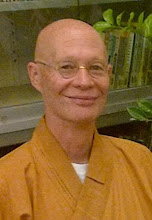
Many people ask me about Pure Land Buddhist Meditation. Pure Land Buddhism is often misrepresented in the in the West as no more than a “Christianized Buddhism”. It is often referred to in Western literature as a Buddhism of “faith” and that if one believes in Amitabha Buddha you will go to Buddhist “heaven” – the Pure Land. The second misunderstanding is that Pure Land Meditation is no more than constantly reciting the Buddha name.
Essential to Pure Land Buddhism is an understanding that the “Pure Land” is right here and now. The Pure Land is the deep serenity created right now in our own minds. Amitabha Buddha is the Buddha of Infinite Life and Light. By concentrating on his name we link directly with his light and life. When we copy the Buddha’s teachings and duplicate them in our own life we become one with the Buddha; our Buddha nature becomes realized.
Although it is part of the practice of Pure Land Buddhism to audibly recite the name of Amitabha Buddha (Amitofuo in Chinese) the Masters do not always place emphasis on the volume and leave us with many methods depending upon our circumstances. Therefore, in Pure Land Meditation we “recite” the name in time with breathing in silence. Shan Tao (613-681CE) devoted his life to the contemplation of the Amitabha Buddha and wrote profusely about Buddha name recitation and method inspired by his deep study of the Contemplation Sutra. In the third section of his commentary on the Contemplation Sutra, entitled "On the Meaning of Meditative Good," Shan-tao begins his exposition of the thirteen contemplations by raising a question and then presenting a practical method of mindfulness meditation.
This mindfulness meditation is not widespread and from my present research is preserved in a few small temples in Mainland China in Zhejiang Province and in the vicinity of Anhui.
This mindfulness meditation has two parts.
1.Preparation: Visualizing the four elements of the body dissolving to dust and blowing to the four winds one becomes deeply centered, light and calm. In this tranquil state one moves into mindfulness of breathing and mindfulness of the Buddha name.
2. Coordination of breath and Buddha Name: The meditator begins to focus on taking the breath in deeply to a point just below the navel and breathing out tranquilly and quietly. On inhaling one concentrates on the word : 阿弥陀佛 (A-mi-to-fuo). Exhaling concentrate on the word “Amitofuo”
Is that all there is? Well, yes and no. The method is simple. The practise, well, that is another thing! The aim is to focus only on the name Amitofuo, so each time your mind wants to distract you just simply bring your attention back to breathing and focusing on the name. Eventually one gets to the point of total focus like learning how to balance on a bike for the first time. At this point there is an immense calm and tranquillity called Buddha Name Samedhi. . .that is until the ever chatting mind wants to butt in again! Like all things practise is the key.

No comments:
Post a Comment